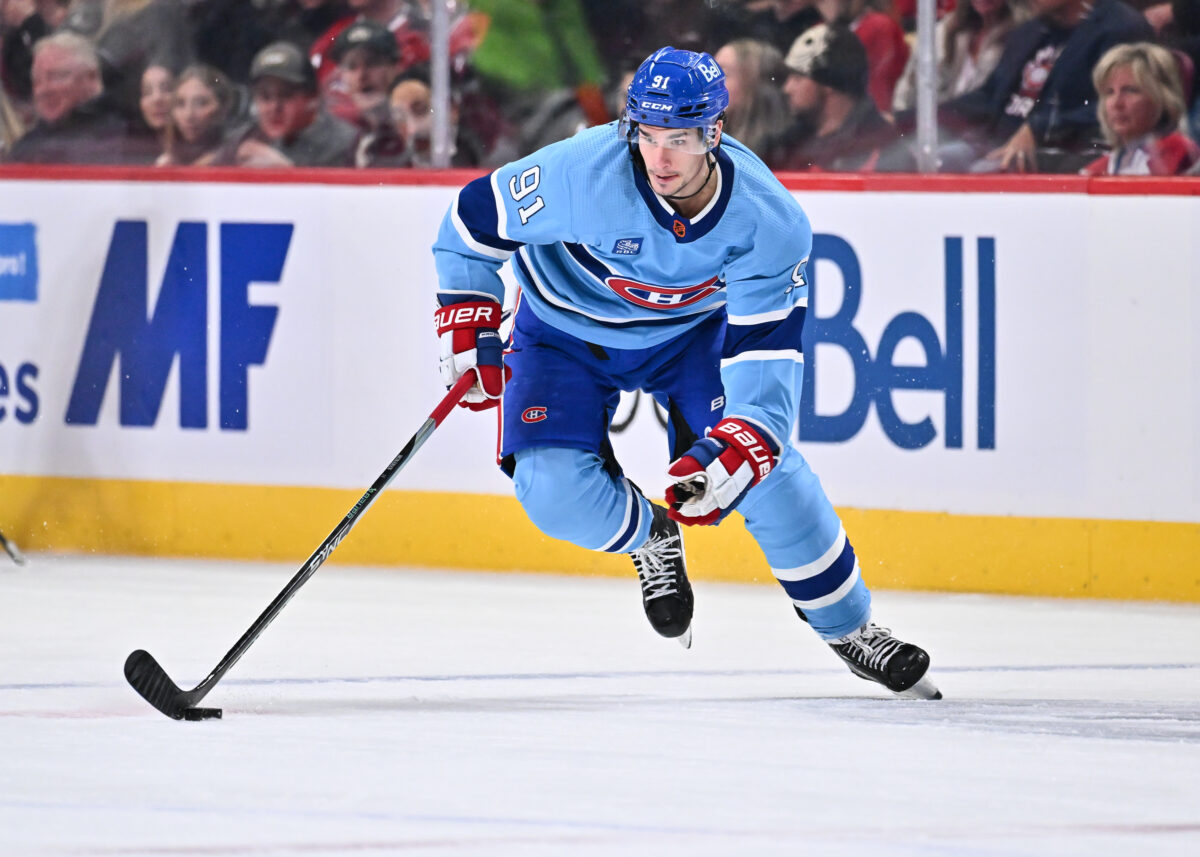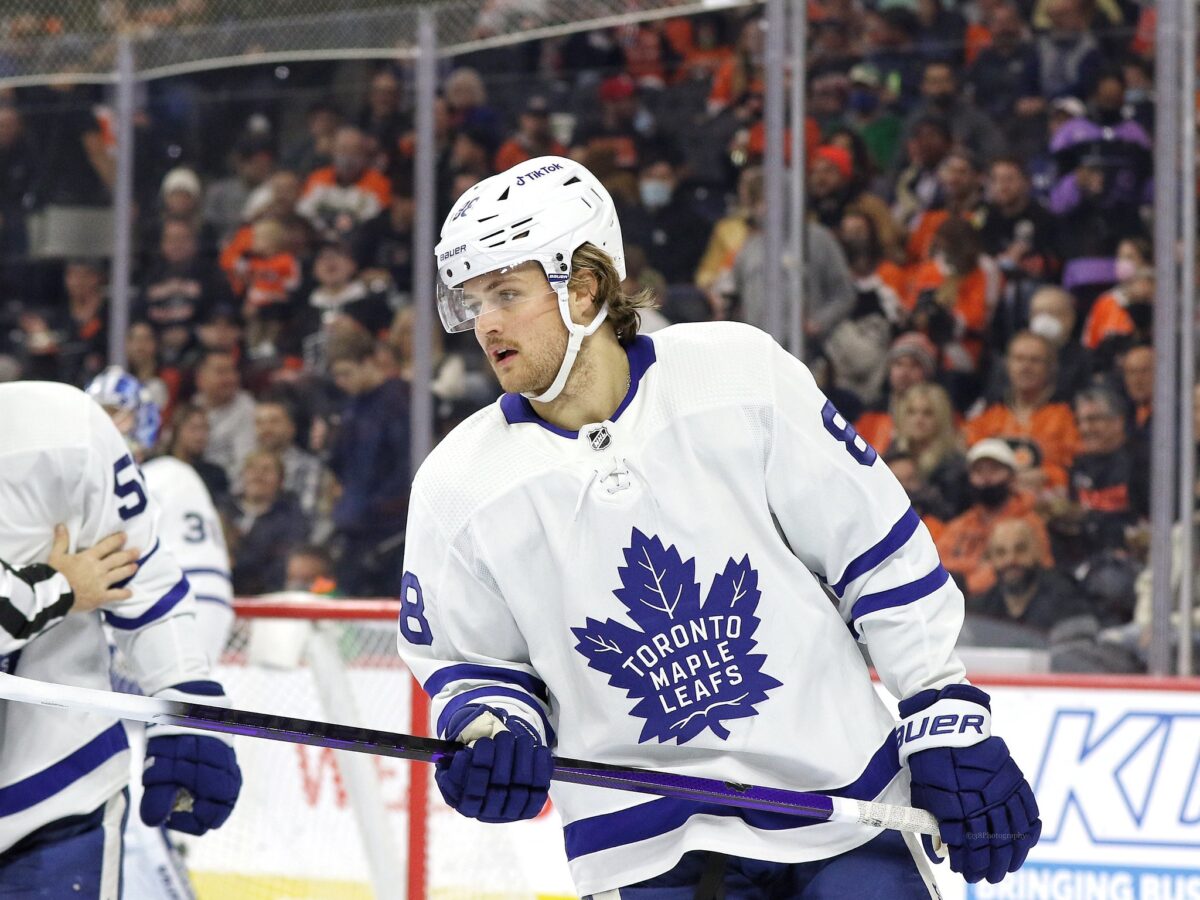It has been a very quiet summer for the Montreal Canadiens, who have only attended to their own restricted free agents (RFA) and some additions for their American Hockey League (AHL) affiliate. With the underwhelming unrestricted free agent (UFA) class, the crowded NHL roster, and the fact the team isn’t ready to truly compete beyond trying to be a playoff bubble team, a quiet offseason was a good strategy.
Related: Canadiens’ European Prospects Need Some Home Cooking
A rebuild takes patience and vision because the plans take years to pay off. For Canadiens fans, general manager (GM) Kent Hughes’ strategic plan is now beginning to come into focus. The summer of 2024 is when the Habs can begin to open their competitive window.
Canadiens Have a Plan
When Hughes took the reigns as GM under the guidance of executive vice president Jeff Gorton, the writing was on the wall, the Canadiens were going to have a complete makeover. The Marc Bergevin Era had some successes, most notably the 2021 Stanley Cup Final appearance. However, that seemed to be more due to the emotions of a team rallying around two aging veterans in Shea Weber and Carey Price, hoping to give them a true opportunity to win. But it fell three games short of their goal.
That run seemed to aggravate some injuries and make others more crippling as both players ended up not playing another NHL game; both are still under contract but will likely finish those deals while on long-term injured reserve (LTIR). Add back-to-back seasons where the Canadiens set team records for man-games lost in a single season.
The deep playoff run, where the Canadiens were outmatched by a much deeper club, coupled with all the injuries, seemed to have allowed the fan base to accept that the Habs were flawed and needed to rebuild. This allowed Hughes to put his plan into motion, a plan that seemed to have the 2024-25 season as the targeted time to begin to compete again. Why is that you may ask? Because that is when the Habs salary cap structure becomes rebalanced towards the current core and when many of the young prospects are expected to finally arrive in the NHL.
First, a look at the salary cap. Currently (the 2023-24 season) is over the $83.5 million cap ceiling, but with Price returning to LTIR, there will be over $6 million in usable space. However, looking at the 2024 offseason, Hughes will have significant space to use. There will be several players coming off the books, Karl Alzner and his buyout ($833000), Mike Hoffman ($4.5 million), Rem Pitlick ($1.1 million), Denis Wideman ($763000), and Sean Monahan ($2 million).

Monahan is the one most likely to be traded at the 2024 Trade Deadline for something of value, the hope is that it’s the equivalent of a first-round draft pick, but that will depend on his health and level of play. Samuel Montembeault’s contract is also coming off the books, but he’ll likely remain and sign a new deal. If he plays to the level he did last season, there’s no reason not to expect him to earn as much as $3 million.
Then, add in the veterans that will likely be moved in the summer of 2024. While getting value in return is always good, in these cases, it’s more to ensure their contracts come off the books. Christian Dvorak ($4.45 million), Joel Armia ($3.4 million), and David Savard ($3.5 million). Hughes will want to be rid of their salaries, so the return is less important than the $11.35 million that their departures would provide.
Why are the returns on any deals with these players less important? Because the Canadiens are considered to have one of the best prospect pools in the NHL, led by standout defensive prospects Lane Hutson and David Reinbacher, who have the potential to become a very good top pairing in a few years. Also, the Canadiens’ prospect pool is loaded with possible NHL talent, with a contract limit of 50 and having drafted 37 players in the last four drafts (2020 to 2023).
Canadiens to Steal the Show
With all the above-mentioned players off the books, the Canadiens will be looking at a cap hit of $60.805 million. The cap is expected to increase in 2024 by several million and could have a cap ceiling as high as $87.5 million, providing Montreal with $26.695 million to use to round out the roster.
With a solid young core, led by Nick Suzuki and Cole Caufield, who each have contracts that take up 9.4% of the total salary cap at the time of their signings, have set a standard within the organization for, in general, what the young core players should expect for their big money deals if they meet management’s expectations on their development and potential. Keep in mind, of course, that there will be a need to pay some of those young graduating prospects when they arrive, but also players like Kirby Dach, who will need a raise. That being said, it shouldn’t be a surprise if Hughes would have $12 million set aside in that total to make a big splash in 2024
With all that cap space at his disposal, Hughes will be poised to add a significant piece to the roster. The 2024 UFA class has several names that stand out who could become that missing elite piece the Canadiens need, and Arpon Basu of The Athletic provides one name that could be a good fit, fill that need and provide some fire to a traditional rivalry.
“They would have the cap space to make a serious run at William Nylander if he makes it to market, and it doesn’t sound as though talks on an extension with the Toronto Maple Leafs have gone all that well thus far. He will have just turned 28 two months before July 1, 2024, and has been a remarkably consistent scorer for the Maple Leafs, even in the playoffs — in his last three playoffs he has 12 goals and 25 points in 25 games, matching Auston Matthews’ point total over that span.”
–Arpon Basu (from ‘Canadiens mailbag: Juraj Slafkovský expectations should be measured, but not undervalued,’ The Athletic, 31 July 2023)
It is no secret that adding elite talent via UFA is usually the most expensive path. While Hughes may make a trade for that missing piece, to do so would take a significant piece from their roster or prospect pool, or more likely from both. That price could be more detrimental in the long run than providing a UFA with a big chunk of the team’s overall cap.

Hughes has built upon the defensive prospect depth Bergevin bequeathed him. But the current GM has moulded that blue line to play a much more modern style, with mobility and a focus on transitional play. Habs management likely believes they have their top six centers (Suzuki, Dach), their sniper (Caufield), their elite power forward (Juraj Slafkovsky) and their speedy playmaker (Alex Newhook) in place. That leaves a gaping hole to fill in the top six. It’s clear that the need to add an elite skill set is at forward, that’s why Nylander is such an interesting person to look at. His scoring ability, proven playoff performances, and the fact his age is closely aligned with the Canadiens core group make him a seemingly good choice.
The current Canadiens roster is set for sweeping change this season, allowing Hughes to make the 2024 offseason his jumping-off point into a championship contender window. He has proven himself to be a calculated and patient GM. More importantly, he has shown an ability to make bold moves. These traits aren’t mutually exclusive, as he has shown the patience to get the franchise to this tipping point over several seasons. He has also done so without straying from the values he sets for assets or individuals. He has been bold in his decisions via trade and at the draft table. If he follows through and adds an elite UFA with that cap space, there will be no more doubt, it will be his team, and the pressure from the fan base for the Canadiens to win will begin.
